Escape Room Game for Engineering Students: “Escape Department”, a Case Study
Abstract
1. Introduction
2. Motivation
3. Materials and Methods
4. Results
5. Discussion
6. Conclusions
Author Contributions
Funding
Institutional Review Board Statement
Informed Consent Statement
Data Availability Statement
Acknowledgments
Conflicts of Interest
References
- Montenegro-Rueda, M.; Fernández-Cerero, J.; Mena-Guacas, A.F.; Reyes-Rebollo, M.M. Impact of Gamified Teaching on University Student Learning. Educ. Sci. 2023, 13, 470. [Google Scholar] [CrossRef]
- Zainuddin, Z.; Chu, S.K.W.; Shujahat, M.; Perera, C.J. The impact of gamification on learning and instruction: A systematic review of empirical evidence. Educ. Res. Rev. 2020, 30, 100326. [Google Scholar] [CrossRef]
- Balakrishna, C. The Impact of In-Classroom Non-Digital Game-Based Learning Activities on Students Transitioning to Higher Education. Educ. Sci. 2023, 13, 328. [Google Scholar] [CrossRef]
- Okariz, A.; Huebra, M.; Sarasola, A.; Ibarretxe, J.; Bidegain, G.; Zubimendi, J.L. Gamifying Physics Laboratory Work Increases Motivation and Enhances Acquisition of the Skills Required for Application of the Scientific Method. Educ. Sci. 2023, 13, 302. [Google Scholar] [CrossRef]
- Francisco, V.; Moreno-Ger, P.; Hervás, P. Application of Competitive Activities to Improve Students’ Participation. IEEE Trans. Learn. Technol. 2022, 15, 2–14. [Google Scholar] [CrossRef]
- Hou, H.-T. Diverse Development and Future Challenges of Game-Based Learning and Gamified Teaching Research. Educ. Sci. 2023, 13, 337. [Google Scholar] [CrossRef]
- Maxim, B.R.; Kaur, R.; Apzynski, C.; Edwards, D.; Evans, E. An Agile Software Engineering Process Improvement Game. In Proceedings of the IEEE Frontiers in Education Conference (FIE), Eire, PA, USA, 12–15 October 2016; pp. 1–4. [Google Scholar]
- Paciarotti, C.; Bertozzi, G.; Sillaots, M. A new approach to Gamification in engineering education: The Learner-Designer Approach to Serious Games. Eur. J. Eng. Educ. 2021, 46, 1092–1116. [Google Scholar] [CrossRef]
- Jacobs, E.; Garbrecht, O.; Kneer, R.; Rohlfs, W. Game-based learning apps in engineering education: Requirements, design and reception among students. Eur. J. Eng. Educ. 2023, 48, 448–481. [Google Scholar] [CrossRef]
- Valle, P.H.D.; Toda, A.M.; Barbosa, E.F.; Maldonado, J.C. Educational Games: A Contribution to Software Testing Education. In Proceedings of the IEEE Frontiers in Education Conference (FIE), Indianapolis, IN, USA, 18–21 October 2017; pp. 1–8. [Google Scholar]
- Calderón, A.; Trinidad, M.; Ruiz, M.; O’Connor, R.V. Teaching Software Processes and Standards: A Review of Serious Games Approaches. In Software Process Improvement and Capability Determination; SPICE 2018: Communications in Computer and Information Science; Stamelos, I., O’Connor, R., Rout, T., Dorling, A., Eds.; Springer: Cham, Switzerland, 2018; Volume 918, pp. 154–166. [Google Scholar]
- Braghirolli, L.F.; Ribeiro, J.L.D.; Weise, A.D.; Pizzolato, M. Benefits of Educational Games as an Introductory Activity in Industrial Engineering Education. Comput. Hum. Behav. 2016, 58, 315–324. [Google Scholar] [CrossRef]
- Chang, Y.; Aziz, E.S.; Zhang, Z.; Zhang, M.; Esche, S.K. Evaluation of a Video Game Adaptation for Mechanical Engineering Educational Laboratories. In Proceedings of the IEEE Frontiers in Education Conference (FIE), Eire, PA, USA, 12–15 October 2016; pp. 1–6. [Google Scholar]
- Mavromihales, M.; Holmes, V.; Racasan, R. Game-based Learning in Mechanical Engineering Education: Case Study of Games-Based Learning Application in Computer Aided Design Assembly. Int. J. Mech. Eng. Educ. 2019, 47, 156–179. [Google Scholar] [CrossRef]
- Taillandier, F.; Adam, C. Games Ready to Use: A Serious Game for Teaching Natural Risk Management. Simul. Gaming 2018, 49, 441–470. [Google Scholar] [CrossRef]
- Bahadoorsingh, S.; Dyer, R.; Sharma, C. Integrating Serious Games Into the Engineering Curriculum-a Game-Based Learning Approach to Power Systems Analysis. Int. J. Comput. Vis. Robot. 2016, 6, 276. [Google Scholar] [CrossRef]
- Padilla, J.J.; Lynch, C.J.; Diallo, S.Y.; Gore, R.J.; Barraco, A.; Kavak, H.; Jenkins, B. Using Simulation Games for Teaching and Learning Discrete-Event Simulation. In Proceedings of the Winter Simulation Conference (WSC), Arlington, VA, USA, 11–14 December 2016; pp. 3375–3384. [Google Scholar]
- Alanne, K. An overview of game-based learning in building services engineering education. Eur. J. Eng. Educ. 2016, 41, 204–219. [Google Scholar] [CrossRef]
- Hartmann, A.; Gommer, L. To play or not to play: On the motivational effects of games in engineering education. Eur. J. Eng. Educ. 2021, 46, 319–343. [Google Scholar] [CrossRef]
- Hawke, L.D.; Sheikhan, N.Y.; MacCon, K.; Henderson, J. Going virtual: Youth attitudes toward and experiences of virtual mental health and substance use services during the COVID-19 pandemic. BMC Health Serv. Res. 2021, 21, 340. [Google Scholar] [CrossRef]
- Warmelink, H.; Mayer, I.; Weber, J.; Heijligers, B.; Haggis, M.; Peters, E.; Louwerse, M. AMELIO: Evaluating the Team-Building Potential of a Mixed Reality Escape Room Game. In Extended Abstracts Publication of the Annual Symposium on Computer-Human Interaction in Play; Association for Computing Machinery: Amsterdam, The Netherlands, 2017; pp. 111–123. [Google Scholar]
- Fotaris, P.; Mastoras, T. Room2Educ8: A Framework for Creating Educational Escape Rooms Based on Design Thinking Principles. Educ. Sci. 2022, 12, 768. [Google Scholar] [CrossRef]
- Kuo, H.-C.; Pan, A.-J.; Lin, C.-S.; Chang, C.-Y. Let’s Escape! The Impact of a Digital-Physical Combined Escape Room on Students’ Creative Thinking, Learning Motivation, and Science Academic Achievement. Educ. Sci. 2022, 12, 615. [Google Scholar] [CrossRef]
- Grande-de-Prado, M.; García-Martín, S.; Baelo, R.; Abella-García, V. Edu-Escape Rooms. Encyclopedia 2021, 1, 12–19. [Google Scholar] [CrossRef]
- Yllana, F.; González-Gómez, D.; Jeong, J.S. The escape room and breakout as an aid to learning STEM contents in primary schools: An examination of the development of pre-service teachers in Spain. Education 2023, 3, 1–17. [Google Scholar]
- Lim, K.Y.T.; Truong, K.M.; Wu, Y. Melody Mystery: Learning Music Theory through Escape Room Puzzles. Educ. Sci. 2023, 13, 491. [Google Scholar] [CrossRef]
- Fraguas-Sánchez, A.I.; Serrano, D.R.; González-Burgos, E. Gamification Tools in Higher Education: Creation and Implementation of an Escape Room Methodology in the Pharmacy Classroom. Educ. Sci. 2022, 12, 833. [Google Scholar] [CrossRef]
- Ang, J.W.J.; Ng, Y.N.A.; Liew, R.S. Physical and digital educational escape room for teaching chemical bonding. J. Chem. Educ. 2020, 97, 2849–2856. [Google Scholar] [CrossRef]
- Borrego, C.; Fernández, C.; Blanes, I.; Robles, S. Room escape at class: Escape games activities to facilitate the motivation and learning in computer science. J. Technol. Sci. Educ. 2017, 7, 162–171. [Google Scholar] [CrossRef]
- Arnal-Palacián, M.; Macías-García, J.A.; Duarte Tosso, I. Escape Rooms as a Way to Teach Magnitudes and Measure in Degrees in Education. In Proceedings of the 8th International Conference New Perspectives in Science Education, Florence, Italy, 21–22 March 2019; Pixel, Ed.; Filodiritto: Bologna, Italy, 2019; pp. 79–84. [Google Scholar]
- Rouse, W. Lessons learned while escaping from a zombie: Designing a breakout edu game. Hist. Teach. 2017, 50, 553–564. [Google Scholar]
- Lopez, A.G. The use of escape rooms to teach and learn English at university. In Research, Technology and Best Practices in Education; Aldeguer, S.P., Akombo, D.O., Eds.; Adaya Press: Eindhoven, The Netherlands, 2019; pp. 94–101. [Google Scholar]
- López-Pernas, S.; Saqr, M.; Gordillo, A.; Barra, E. A learning analytics perspective on educational escape rooms. Interact. Learn. Environ. 2022, 1, 1–17. [Google Scholar] [CrossRef]
- Lathwesen, C.; Belova, N. Escape Rooms in STEM Teaching and Learning—Prospective Field or Declining Trend? A Literature Review. Educ. Sci. 2021, 11, 308. [Google Scholar] [CrossRef]
- Taraldsen, L.H.; Haara, F.O.; Lysne, M.S.; Jensen, P.R.; Jenssen, E.S. A review on use of escape rooms in education—Touching the void. Educ. Inq. 2020, 13, 169–184. [Google Scholar] [CrossRef]
- Gerardi, S. Use of Computers/Apps and the Negative Effects on Children’s Intellectual Outcomes. Sociol. Mind 2017, 7, 128–132. [Google Scholar] [CrossRef][Green Version]
- Araújo, I.; Carvalho, A.A. Enablers and Difficulties in the Implementation of Gamification: A Case Study with Teachers. Educ. Sci. 2022, 12, 191. [Google Scholar] [CrossRef]
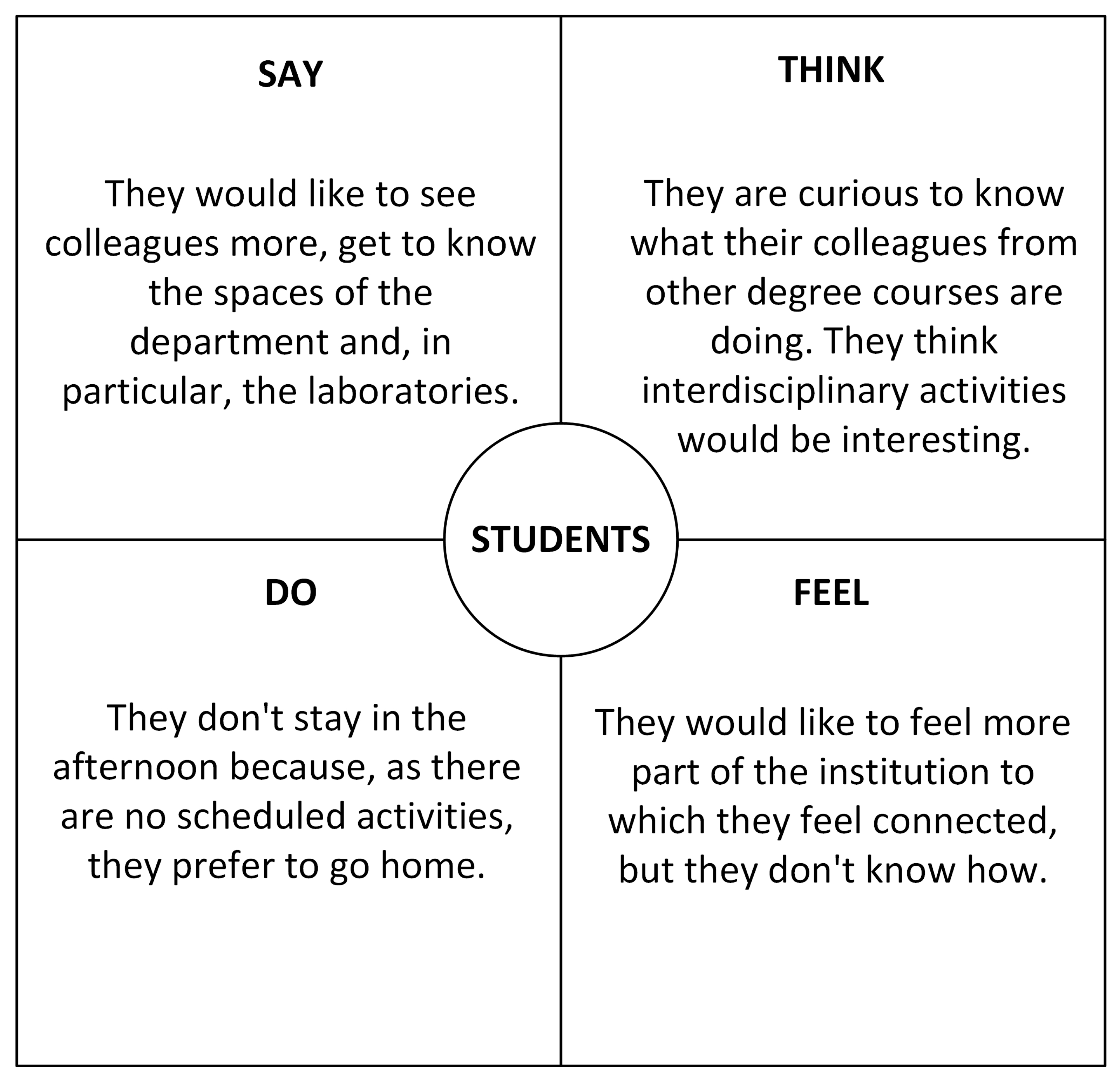

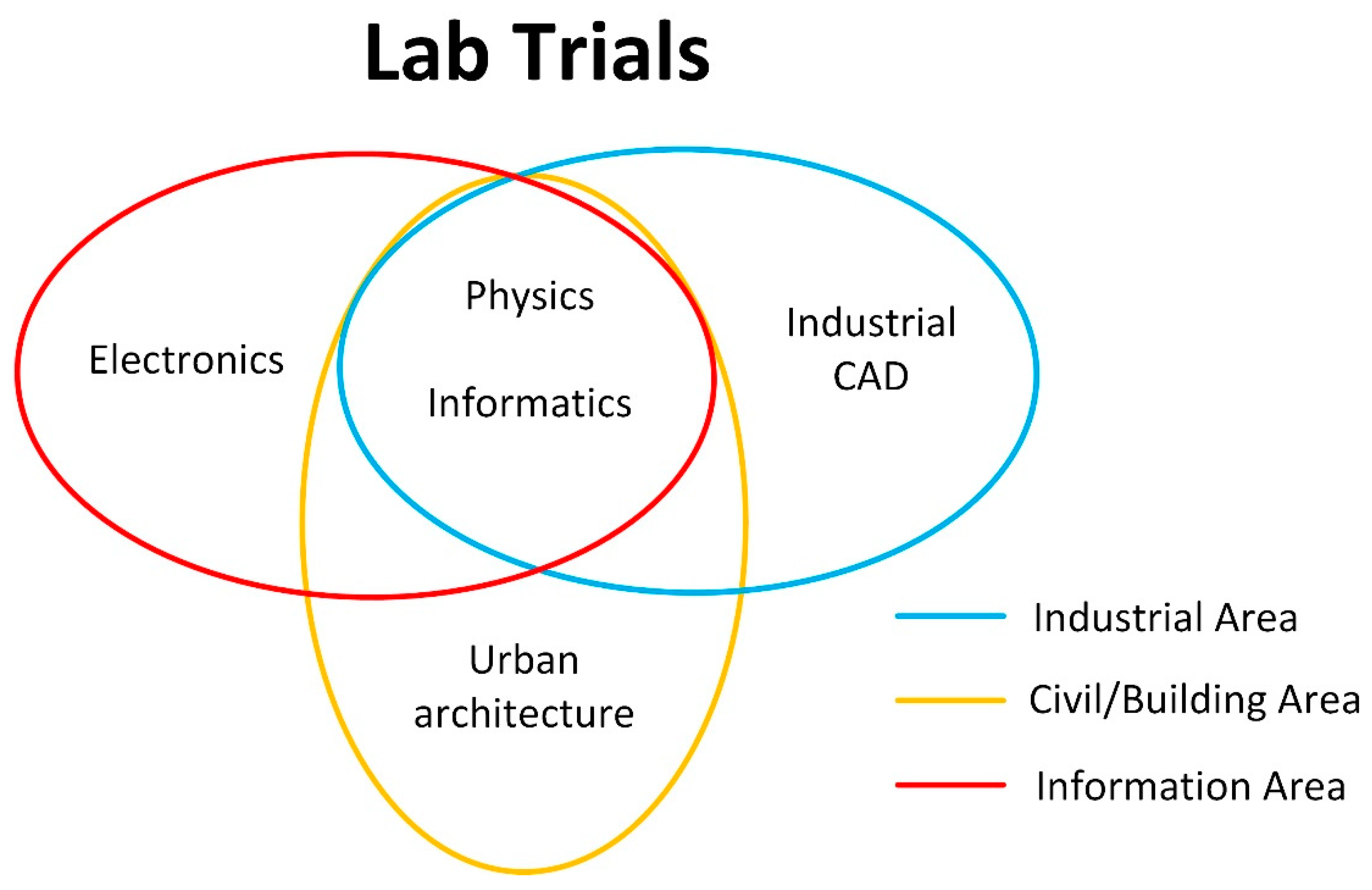

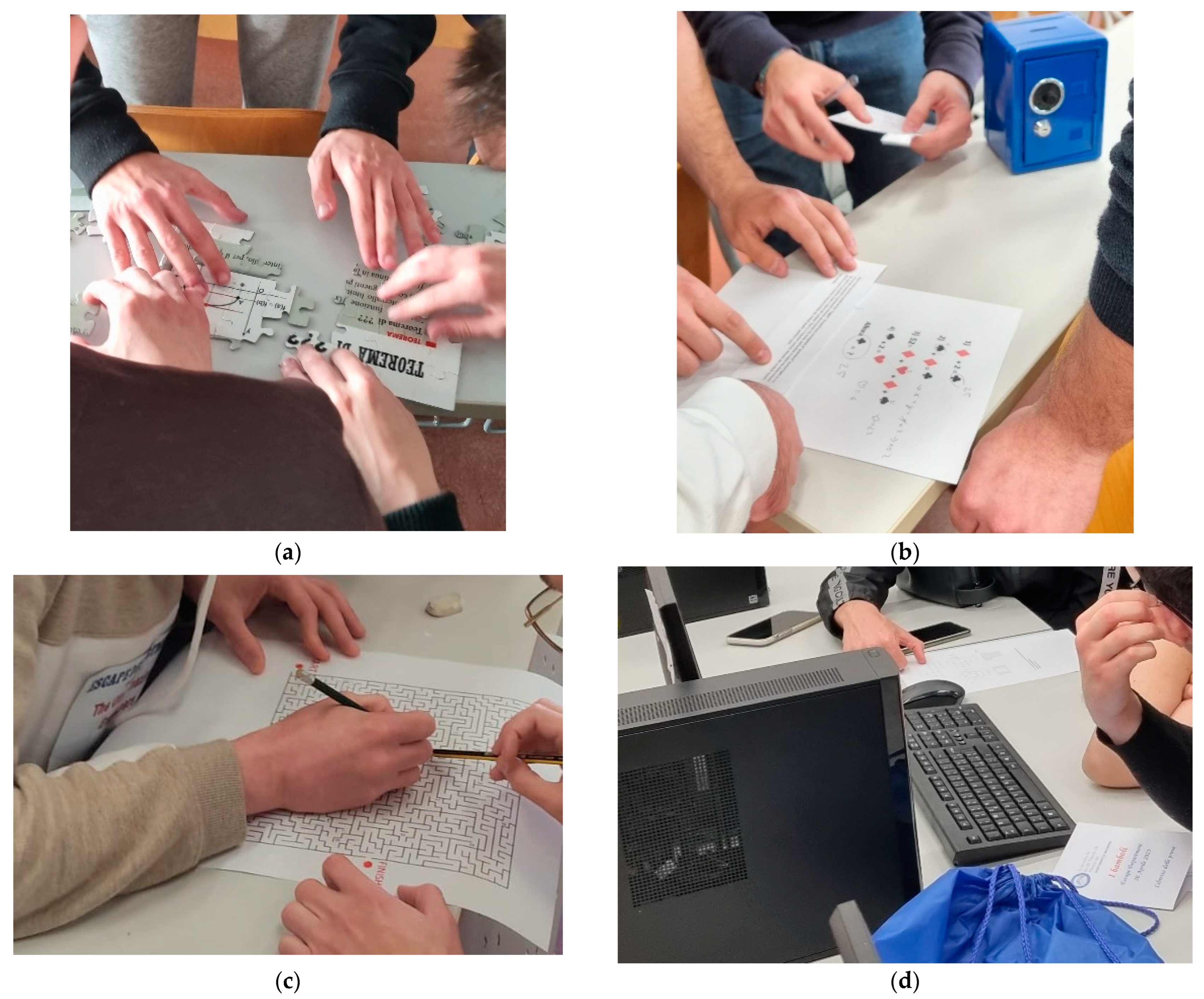
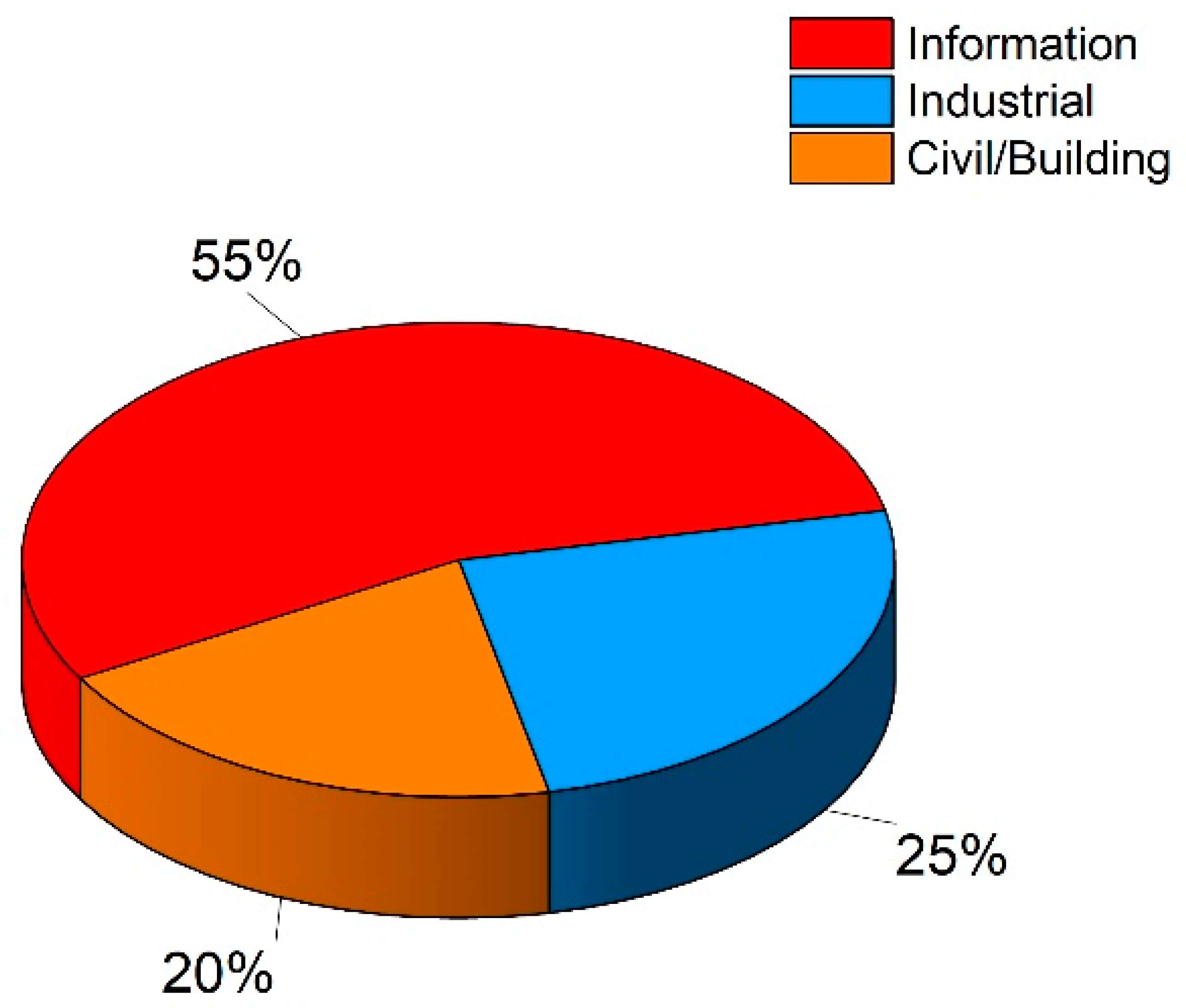
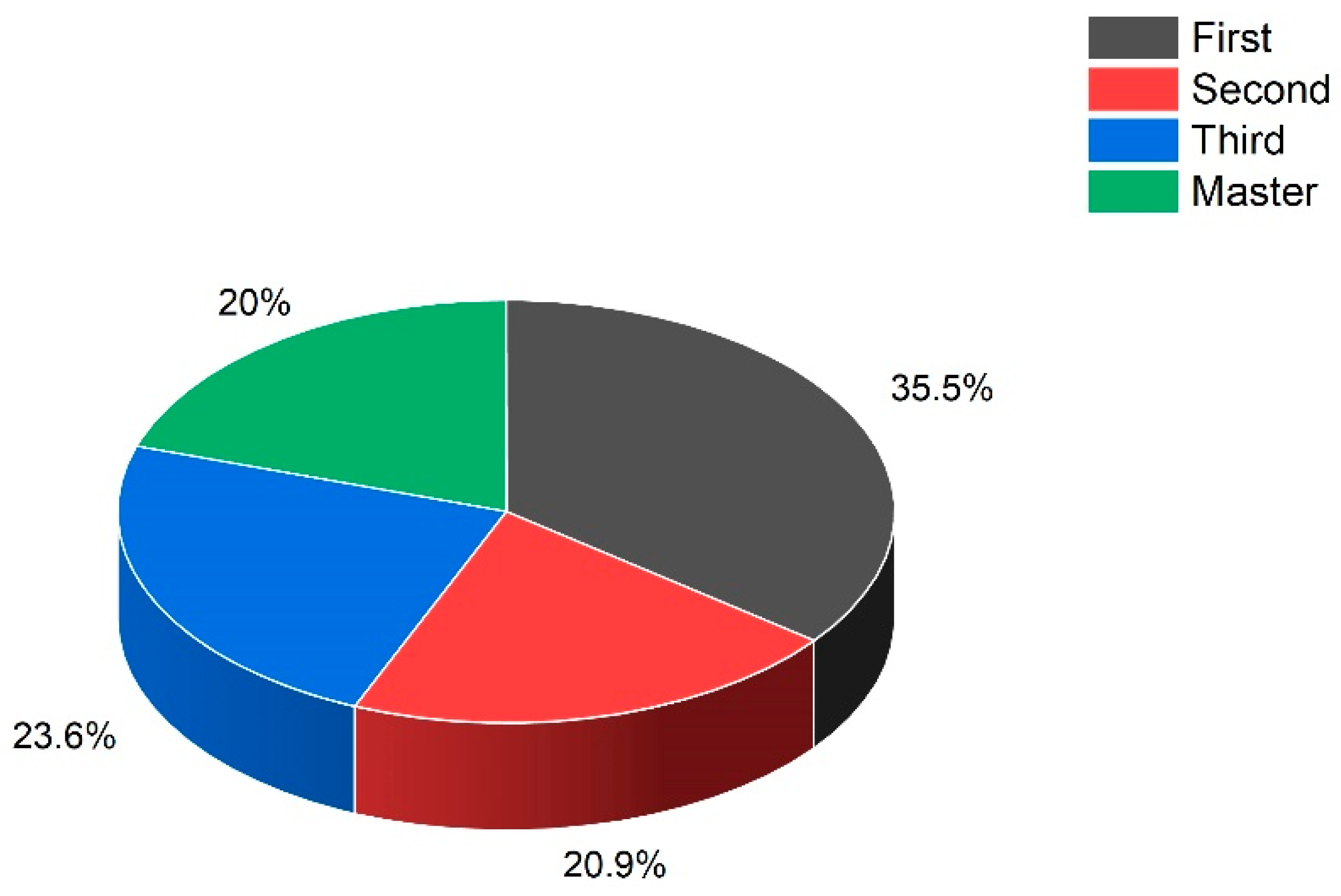



| Game Requirements | Actions |
|---|---|
| Balance among different degree programs |
|
| Balance among different years of the courses |
|
| Provision of rest/fun breaks within the competition |
|
| Laboratory | Trial | Action to Prepare Students |
|---|---|---|
| Electronics | Assemble and operate a circuit, using as few connections as possible. | The students were provided with a possible electrical diagram of the circuit, the diagram of the connections of the board, and an explanation of the operation. From the study of the provided material, the students were able to optimize the connections between the electronic devices in order to build the circuit in a short time, with fewer components and ensuring correct operation. |
| Urban Architecture | Recognize the main buildings of the city, and examples of modern architecture, and place them on the map. | The students were asked to study, locate, and observe the examples of modern architecture, from the post-war period to today, present in the city. |
| Industrial 3D CAD | Design complex interlocking solids. | Students were given a 3D CAD design software on which to practice drawing complex solids. Each team was given a 3D print of the solid to reproduce. The dimensions of the solids to be reproduced were kept secret until the trial. |
| Informatics | Write a numerical conversion program, starting from a known program with all the instructions disordered. | The students were instructed to install a basic programming software. A binary–decimal conversion program with a control procedure was provided. The students had to study how the program worked, understanding every single instruction. |
| Physics | Build a reflection system to emulate a hologram projector. | This task was designed to be purely manual. Therefore, there were no indications before the game. The students figured out what to do at the time of the test. A brief explanation of the holography was provided to each team at the time of the competition for educational purposes. |
| Trial | Subject | Description and Educational Aspect |
|---|---|---|
| Open a safe | Calculus | Each team found a small safe (closed) and a sheet with a symbolic calculation on a bench. The value of one of the symbols was the code to open the safe. Once the safe was opened, inside was a further calculation question on the results obtained for the first symbols. The password for escaping the classroom was the sequence of required results. Students had to demonstrate numeracy skills. |
| Compose a puzzle | Mathematical Analysis | Each team found (fifty) pieces of a puzzle to put together. Once the puzzle was composed, the image represented was the statement of a mathematical analysis theorem. The password to escape from the classroom was the name of the theorem. Students had to demonstrate manual dexterity, quick eyesight and knowledge of mathematical analysis. |
| Solve a labyrinth | Physics | Each team found a labyrinth on a bench. The labyrinth was littered with numbers. Following the correct way out of the labyrinth formed a sequence of numbers. The students had to figure out that that sequence was a phone number and dial it. A teacher answered the calls and formulated a different physics question for each team. The password to escape the classroom was the answer to the question received over the phone. Students had to demonstrate quickness, intuition, and knowledge of physics. |
| Unlock PDF files on PCs | Physics | Each team, in a computer room, sat in front of a PC. Next to the keyboard was a sheet with a physics question. A folder containing four PDF files was visible on the PC screen, all of which were protected by a password. The answer to the physics question was the password to open just one of those files. When opened, that file contained another physics question. The students had to understand that the answer to that question was the password to open 1 of the 4 other protected PDF files on a PC placed on the same desk as the first. After opening this file as well, each team was faced with another physics question. The answer to this question was the password to escape the classroom. Students had to demonstrate speed of reasoning and knowledge of physics. |
| Goals | Achievements |
|---|---|
| Balance among different degree programs | Although the first three positions of the ranking were achieved by three teams belonging to the information area, the other positions of the ranking showed an even distribution of all areas. It was therefore considered that the goal was achieved to a good degree. |
| Balance among different years of the courses | In the ranking, a uniform distribution of teams with students belonging to different years is evident. In particular, the first-placed team was made up of master’s degree students, but the second-placed team was made up of first-year students. Therefore, the goal was considered fully achieved. |
| Provide rest/fun breaks within the competition | A sport test and a musical test were included. The two tests generated moments of pure fun, albeit always with a spirit of competition. At the end of the final test, while waiting for the results, the students were also offered a hearty snack. The goal was considered fully achieved. |
| Question | Answers | Percentages |
|---|---|---|
| (1) Did you have fun this afternoon? | Yes | 100% |
| No | 0% | |
| (2) Would you repeat the experience next year? | Yes | 100% |
| No | 0% | |
| (3) Do you think the experience was helpful (multiple answers allowed): | To learn something new. | 76% |
| To learn more about the department’s facilities. | 90% | |
| To socialize with colleagues. | 97% | |
| (4) Which of the following aspects prompted you to participate? (Multiple answers allowed) | To spend a different afternoon with colleagues in the department. | 97% |
| The desire to compete with colleagues. | 83% | |
| To enter the labs | 90% | |
| The desire to learn something new, also about other degree courses. | 72% | |
| To acquire training credit to spend on the university career. | 36% | |
| (5) What do you recommend changing for any future editions? (Free-answer question) | Nothing. | 74% |
| To decrease the duration of the game. | 16% | |
| To better synchronize the duration time with public transport timetables. | 6% | |
| To give more gadgets to the participants. | 4% |
Disclaimer/Publisher’s Note: The statements, opinions and data contained in all publications are solely those of the individual author(s) and contributor(s) and not of MDPI and/or the editor(s). MDPI and/or the editor(s) disclaim responsibility for any injury to people or property resulting from any ideas, methods, instructions or products referred to in the content. |
© 2023 by the authors. Licensee MDPI, Basel, Switzerland. This article is an open access article distributed under the terms and conditions of the Creative Commons Attribution (CC BY) license (https://creativecommons.org/licenses/by/4.0/).
Share and Cite
Scandurra, G.; Ciofi, C. Escape Room Game for Engineering Students: “Escape Department”, a Case Study. Educ. Sci. 2023, 13, 785. https://doi.org/10.3390/educsci13080785
Scandurra G, Ciofi C. Escape Room Game for Engineering Students: “Escape Department”, a Case Study. Education Sciences. 2023; 13(8):785. https://doi.org/10.3390/educsci13080785
Chicago/Turabian StyleScandurra, Graziella, and Carmine Ciofi. 2023. "Escape Room Game for Engineering Students: “Escape Department”, a Case Study" Education Sciences 13, no. 8: 785. https://doi.org/10.3390/educsci13080785
APA StyleScandurra, G., & Ciofi, C. (2023). Escape Room Game for Engineering Students: “Escape Department”, a Case Study. Education Sciences, 13(8), 785. https://doi.org/10.3390/educsci13080785







